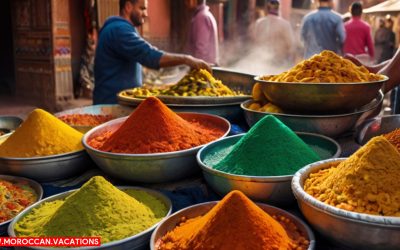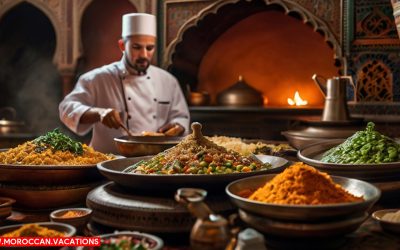The History of Moroccan Cuisine


Embark on a culinary caravan across the sandy dunes of Morocco. You’ll unearth the treasures of its rich cuisine, savoring the symphony of spices in tagines, the comfort of harira soup, and the sweet allure of pastries. You’re not just tasting food, you’re consuming centuries of tradition, culture, and love. Let’s dive into this feast for the senses and explore the best Moroccan dishes that’ll make your palate dance with joy.
To truly appreciate the richness of Moroccan dishes, you’ve got to dive into its thousand-year-old culinary history. This vibrant tapestry is woven from many influences, but two threads stand out: the Berber culinary influence and the French colonial impact.
The Berbers, Morocco’s indigenous people, introduced the world to couscous, a staple that you’ll savor in nearly every Moroccan meal. Their tagines, slow-cooked stews brimming with succulent meats, vegetables, and exotic spices, have been simmering on Moroccan hearths for centuries. Their culinary techniques, handed down through generations, are still alive in Moroccan kitchens today.
Then came the French who colonized Morocco in the early 20th century. They left behind a legacy of baguettes, pastries, and a keen appreciation for fine dining. You’ll notice this French influence in the cafes of Casablanza and Marrakech, where you can enjoy a leisurely café au lait with a croissant, a freedom the French relished and passed on to the Moroccans.
Understanding these influences helps you grasp why Moroccan cuisine is so diverse and flavorful. So, next time you tuck into a Moroccan dish, remember, you’re not just eating food; you’re feasting on a piece of history.
The Flavors of Moroccan Spices
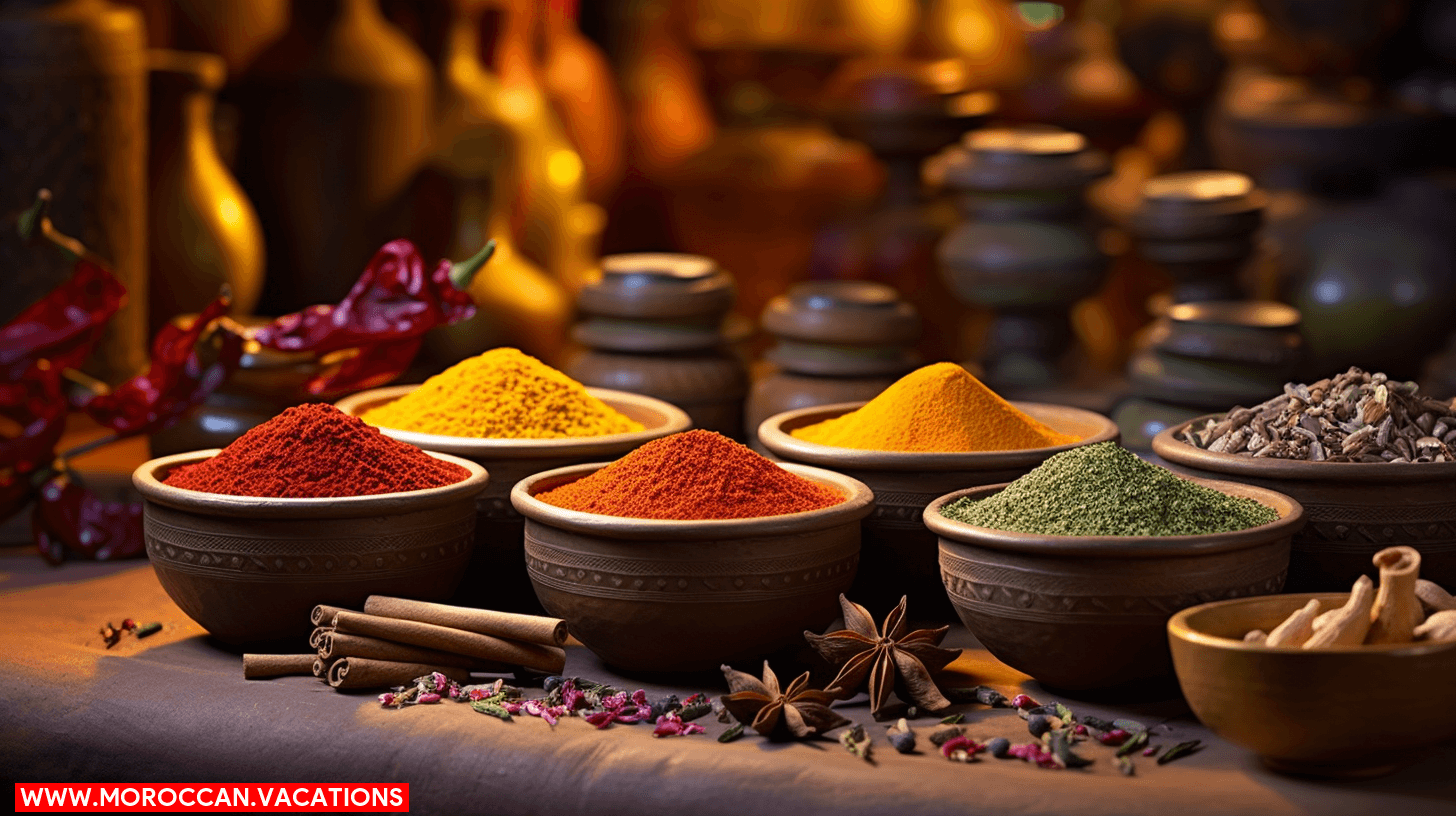

You’ll find that the heart of Moroccan cuisine beats in its vibrant array of spices, each one adding a distinct flavor to every dish. This journey takes you through the bustling lanes of a Moroccan spice market, where your senses will be captivated by the myriad scents and colors.
Embarking on a Spice Market Exploration, you’re struck by the array of vivid hues and intoxicating aromas. Each stall offers an adventure – from the fiery heat of harissa, to the sweet warmth of cinnamon, and the earthy tang of cumin. You’ll witness the creation of ras el hanout, the king of Moroccan spice blends, a secret combination that varies from vendor to vendor but always leads to an exotic blend creation.
The magic of these spices isn’t just in their individual flavors, but in how they harmoniously come together to create dishes that sing with richness and depth. Each spoonful of a Moroccan tagine or a sip of a warming mint tea encapsulates this delicate balance, offering a tantalizing journey for your taste buds.
The Art of Moroccan Tagines
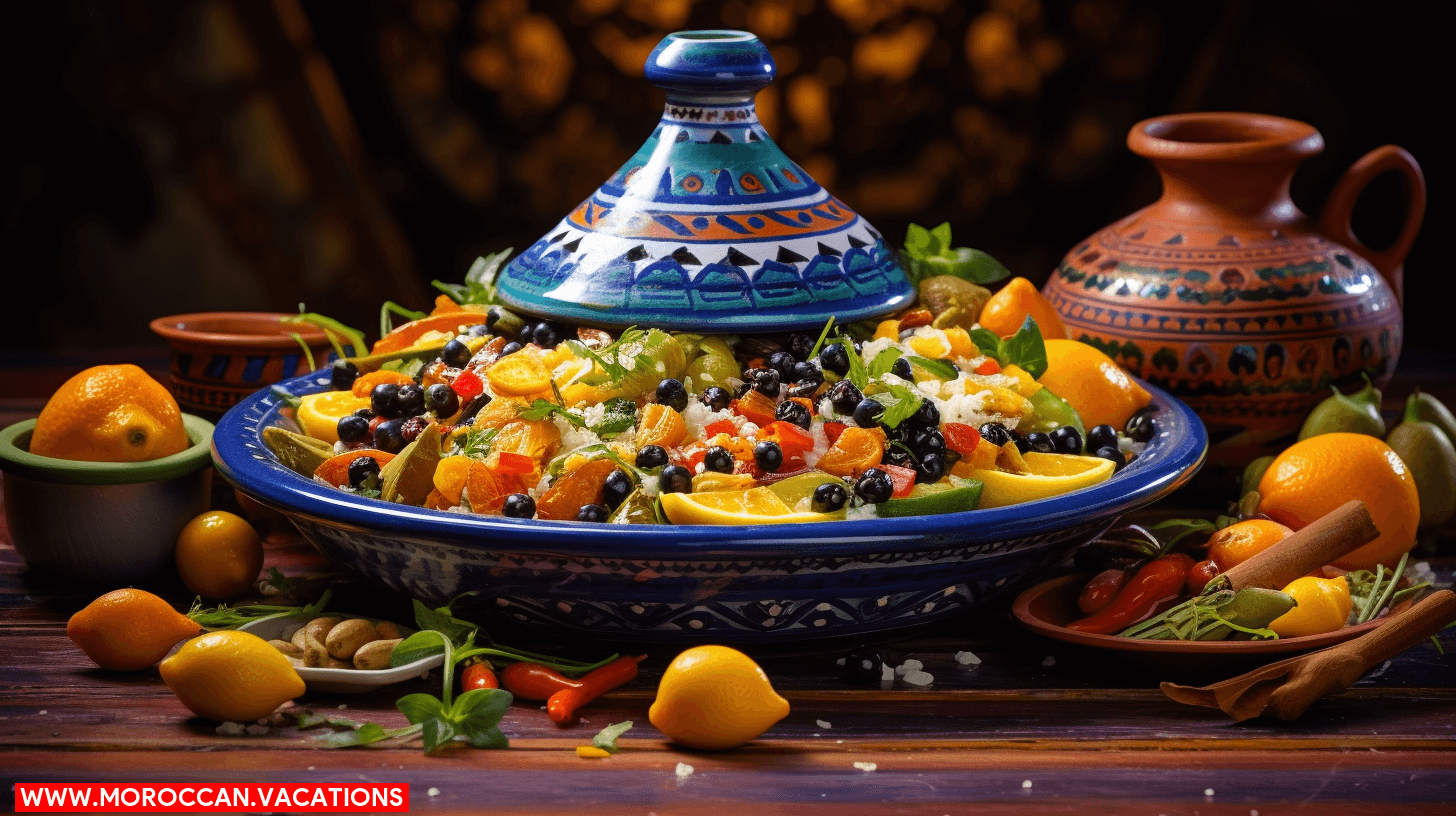

Diving deeper into Moroccan cuisine, let’s unravel the art of Moroccan tagines, a masterpiece that beautifully marries the bounty of local produce with the depth of traditional spices. Tagine utensils are key to this culinary tradition, with their unique conical shape designed to lock in moisture and circulate flavor.
The cooking techniques employed in crafting a Moroccan tagine are as unique as the dish itself. Slow-cooking, braising, and stewing are all facets of the method, each contributing to the rich, deep flavors that are characteristic of this dish.
To understand the art of Moroccan tagines better, let’s explore the key elements in the table below:
| Tagine Element | Description |
| Tagine Utensils | The unique conical shape locks in moisture and circulates flavor |
| Spices | A blend of traditional spices adds depth and richness |
| Cooking Techniques | Slow-cooking, braising, and stewing contribute to the dish’s unique taste |
This culinary journey through Moroccan tagines is a testament to the freedom of creativity in the kitchen. It’s not just about following a recipe, but truly understanding and appreciating the art behind it. This is the essence of Moroccan tagines.
The Secrets of Moroccan Couscous
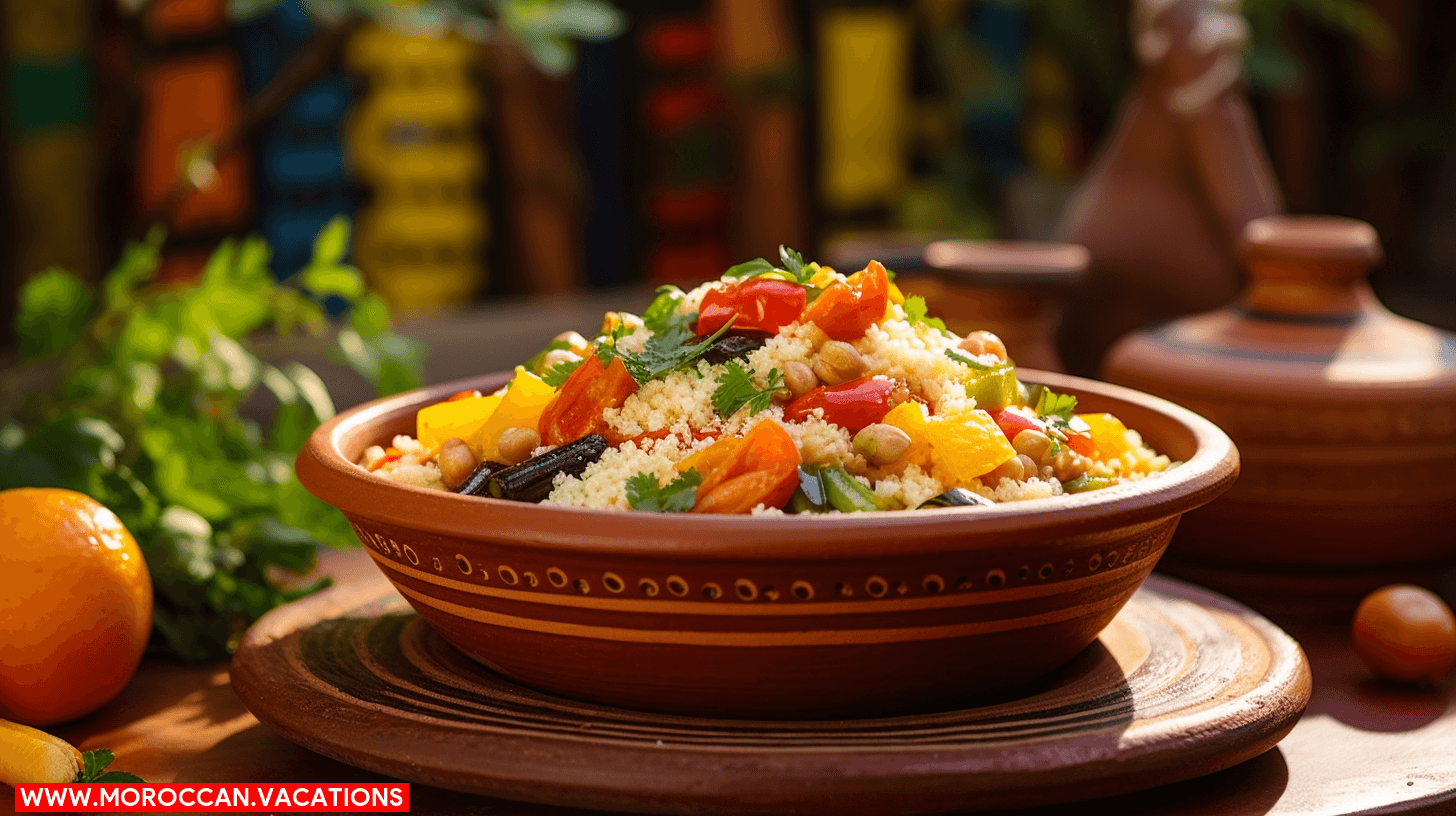

Next on our culinary adventure, we’ll uncover the secrets of Moroccan couscous, a staple that’s as versatile as it is delicious. Let’s delve into the couscous preparation techniques that transform simple semolina grains into fluffy, flavorful morsels.
- Steaming, not boiling: Traditional Moroccan couscous is steamed, not boiled. This allows the couscous to absorb the flavors of the dish fully, making it a savory delight.
- Hand-rolling: Hand-rolled couscous is a labor of love. It’s time-consuming but results in irregular, tiny pearls that are lighter and more absorbent than machine-made alternatives.
- Spice infusion: The use of spices like saffron, cinnamon, and cumin infuses the couscous with an aromatic, tantalizing taste that’s distinctively Moroccan.
Now, let’s discuss the regional couscous variations. In Marrakesh, they favor a sweet and spicy blend, while in Fez, you’ll find a more savory version with meats and vegetables. Coastal areas often incorporate fresh seafood into their dishes, reflecting the bounty of the sea.
Craving freedom? Embrace the flexibility of Moroccan couscous. Experiment, adapt, and create your own delicious version. After all, the best part of any culinary journey is making it your own!
The Comfort of Harira Soup
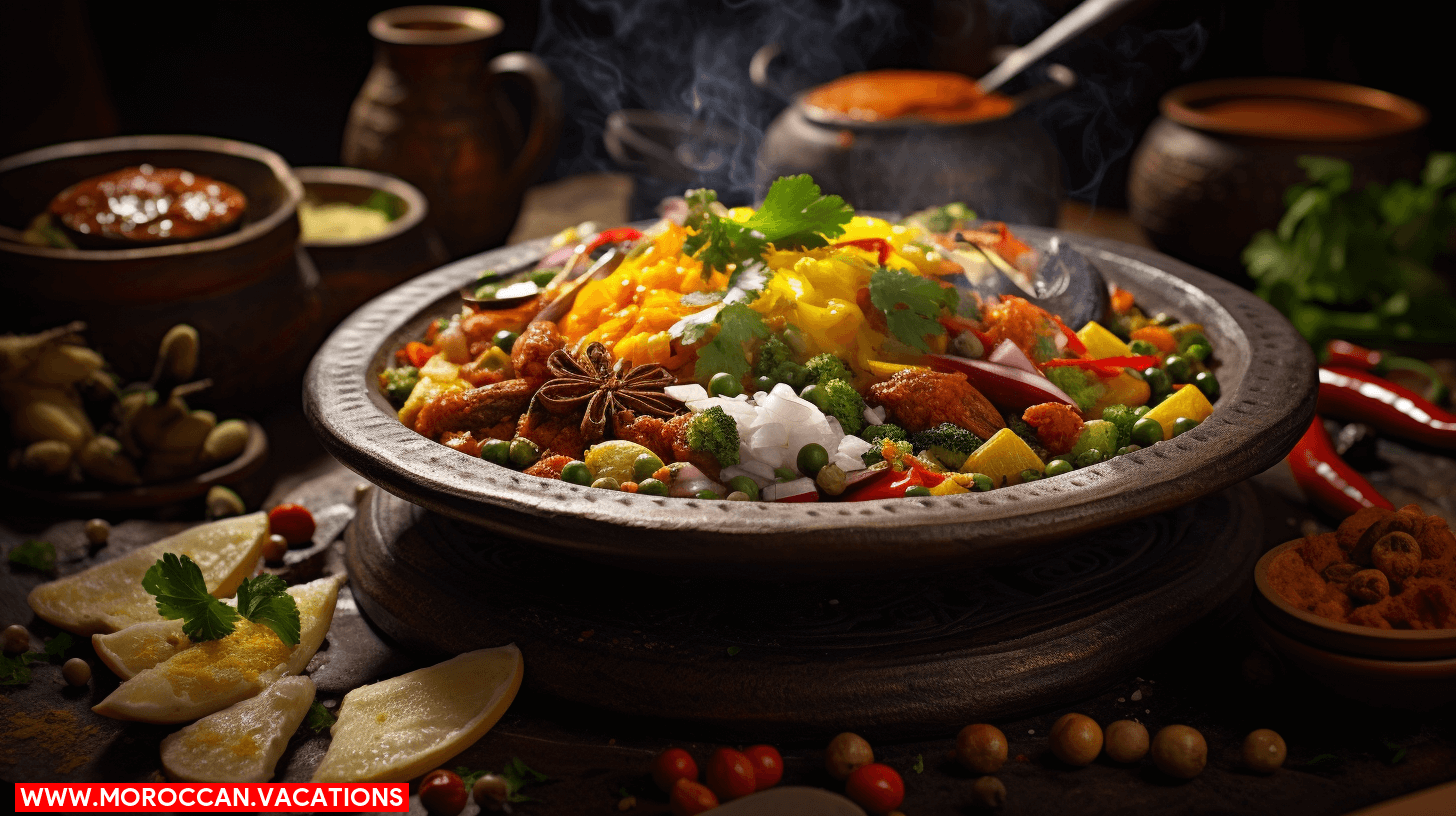

Leaving the fluffy realms of couscous behind, let’s delve into the comforting warmth of Harira soup, a traditional Moroccan dish you’re sure to love. This hearty soup is a symphony of flavors, with lentils and chickpeas playing the base notes, tomatoes adding a tangy counterpoint, and a sprinkling of fragrant herbs like cilantro and parsley to jazz it up.
Soup preparation techniques for Harira are simple, yet they require a patient hand. Remember, it’s a slow-simmered soup, letting the ingredients release their flavors gradually. It’s the kind of dish that you’ll make on a leisurely afternoon, letting the aroma of cooking soup permeate your home, signaling warmth and comfort.
But Harira isn’t just comfort food. It’s also packed with health benefits. The lentils and chickpeas are a great source of protein and fiber, making this soup a nutritious and filling meal. The tomatoes offer a healthy dose of antioxidants while the herbs provide a boost of vitamins.
The Delight of Moroccan Pastries
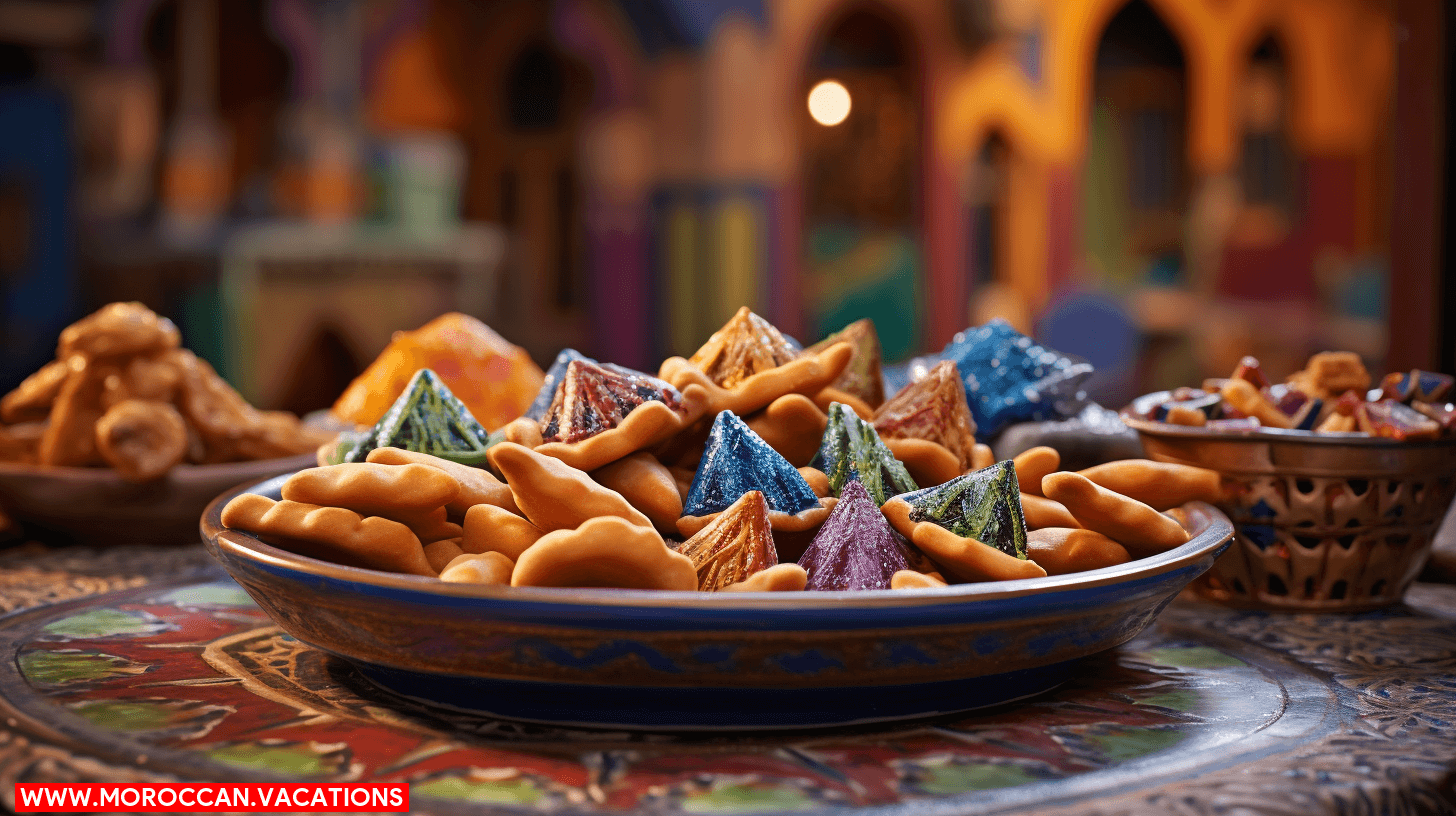

You’ll find a plethora of Moroccan pastries that are irresistible, each offering a unique blend of flavors and textures to delight your palate. These sweet combinations, created with refined pastry techniques, are more than just desserts; they’re a reflection of Morocco’s rich culinary heritage.
- Ghriba: These are the rustic cookies of Morocco. Made from a simple dough of flour, sugar, and butter, Ghriba can be flavored with anything from coconut to sesame seeds. The result is a dense, crumbly cookie with a surprisingly complex flavor profile.
- Briouat: Essentially Moroccan spring rolls, Briouat are thin pastry sheets filled with a variety of sweet or savory ingredients. The sweet ones often contain a mixture of almonds, honey, and orange blossom water.
- M’hanncha: This pastry is a sight to behold. Shaped like a coiled serpent (hence its name, which means ‘snake’ in Arabic), M’hanncha is filled with a sweet mixture of almond paste, orange flower water, and cinnamon.
These pastries offer an escape, a small taste of the freedom and adventure that Morocco’s culinary landscape provides. So why not step out of your comfort zone and give one of these delights a try? You won’t be disappointed.
The Tradition of Moroccan Mint Tea
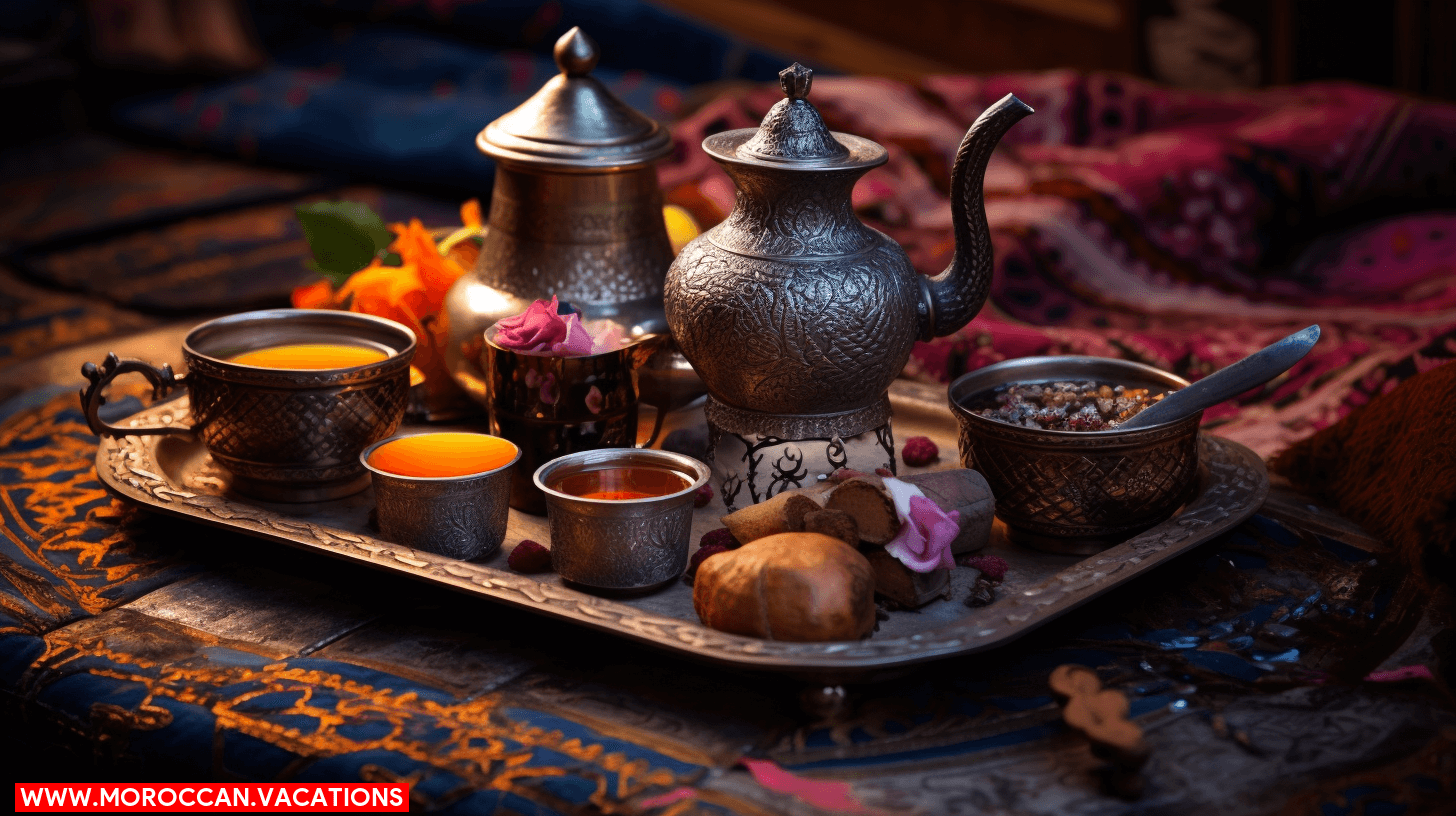

After indulging in the sweet delights of Moroccan pastries, it’s time to quench your thirst with the country’s traditional mint tea, a refreshing beverage that’s steeped in cultural significance. Picture yourself in an ornate Moroccan lounge, the air filled with the delicate aroma of mint, and the clink of glass tea cups. The tea ceremony is a time-honored tradition, an art form that’s passed down through generations.
In Morocco, tea isn’t just a drink—it’s a symbol of hospitality, friendship, and tradition. The preparation and serving of mint tea involves a ritual that’s as captivating as the drink itself. Mint cultivation is an integral part of Moroccan agriculture, as the herb is the soul of this iconic beverage.
Fresh leaves are lavishly packed into a teapot with Chinese gunpowder tea. Boiling water is poured in, the tea is steeped, then poured from a height into slim, glass cups, creating bubbles for a perfect blend. This is a dance of flavors, a symphony of aroma. As you sip Moroccan mint tea, you’re not just tasting a drink, you’re experiencing a slice of Moroccan heritage.
The Influence of Moroccan Cuisine Globally
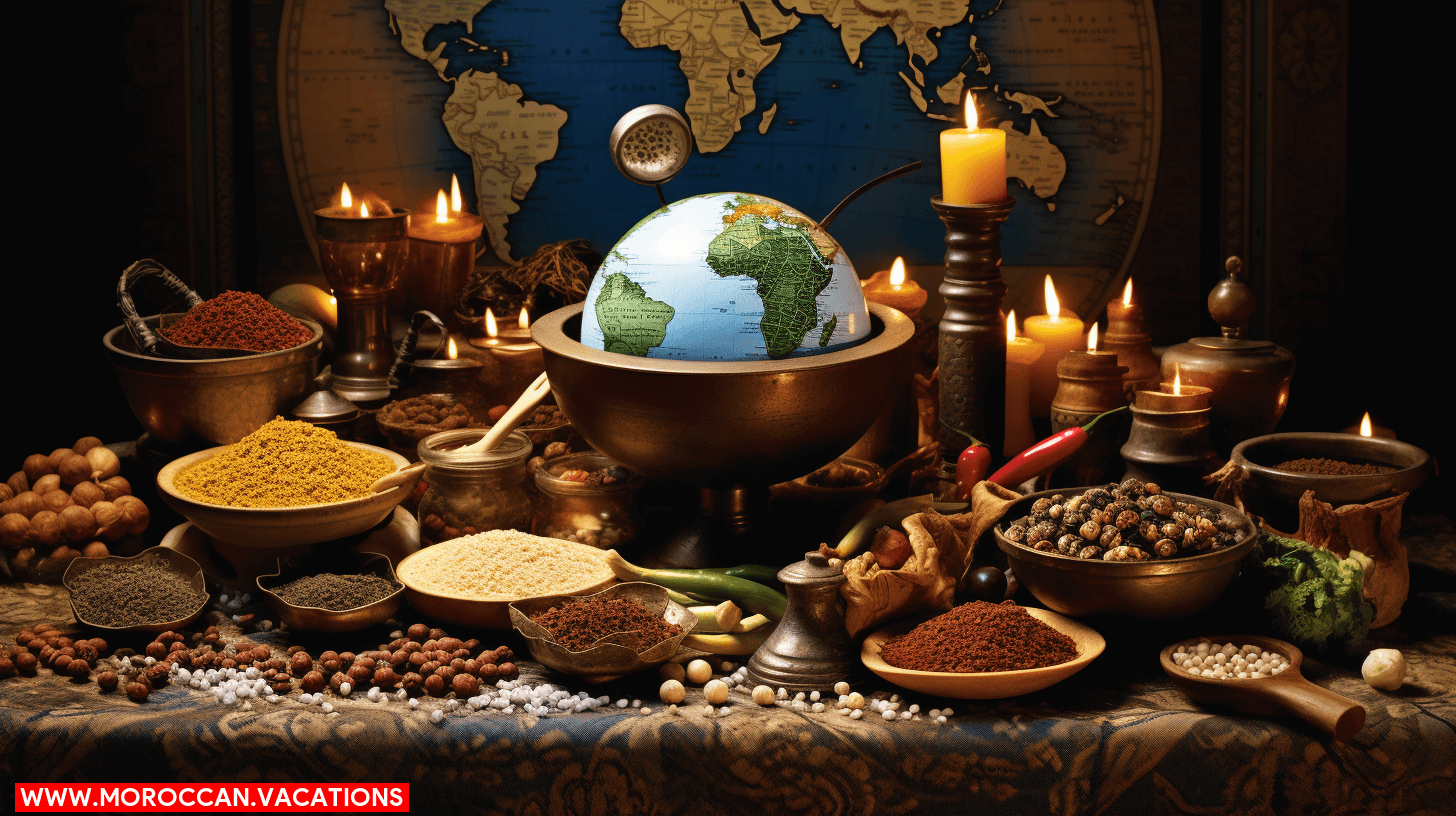

Now, let’s delve into how Moroccan cuisine has made its mouth-watering mark on the global culinary scene. This culinary influence has been profound, extending far beyond the borders of the North African country.
- Global Adaptations: Moroccan dishes have been adapted worldwide, offering exotic flavors to international palates. You’ll find tagines and couscous in upscale restaurants in New York, London, and Sydney. Even fast food chains have incorporated Moroccan spices into their offerings, showcasing the cuisine’s flexibility and appeal.
- Culinary Influence: Moroccan cuisine’s use of unique spices like cumin, coriander, and saffron has influenced global food trends. Now, these spices are found in kitchens all across the globe, adding depth and complexity to a variety of dishes.
- Cultural Exchange: Moroccan food has encouraged cultural exchange. People are not only enjoying the food; they’re also learning about Moroccan traditions and history. The cuisine’s global spread has truly been a celebration of Moroccan culture.
Introducing Ayoub Karbachi, a brilliant wordsmith and curator of the Moroccan Vacations website. Prepare to immerse yourself in mesmerizing narratives and extraordinary moments, as he unveils the allure of Morocco's captivating destinations like never before.
Related Articles
Vegetarian and Vegan Options in Marrakesh Street Food
Traditional Moroccan Vegetarian Tagines Are you tired of feeling limited when it comes to finding vegetarian and vegan options in Marrakesh's bustling street food scene? Well, we've got some good news for you! Get ready to embark on a culinary adventure filled with...
Street Food Safety Tips for Enjoying Marrakesh's Local Cuisine
Research Local Food Regulations Did you know that Marrakesh is home to a vibrant street food scene, offering a rich variety of local cuisine? To fully enjoy these culinary delights while ensuring your health and safety, it's important to follow a few simple tips. In...
The Influence of Arab Cuisine on Moroccan Culinary Traditions
Historical Background of Arab Influence Imagine yourself transported to the vibrant streets of Morocco, where the tantalizing aroma of spices fills the air and the sizzle of food cooking on open flames entices your senses. In this culinary paradise, the influence of...

